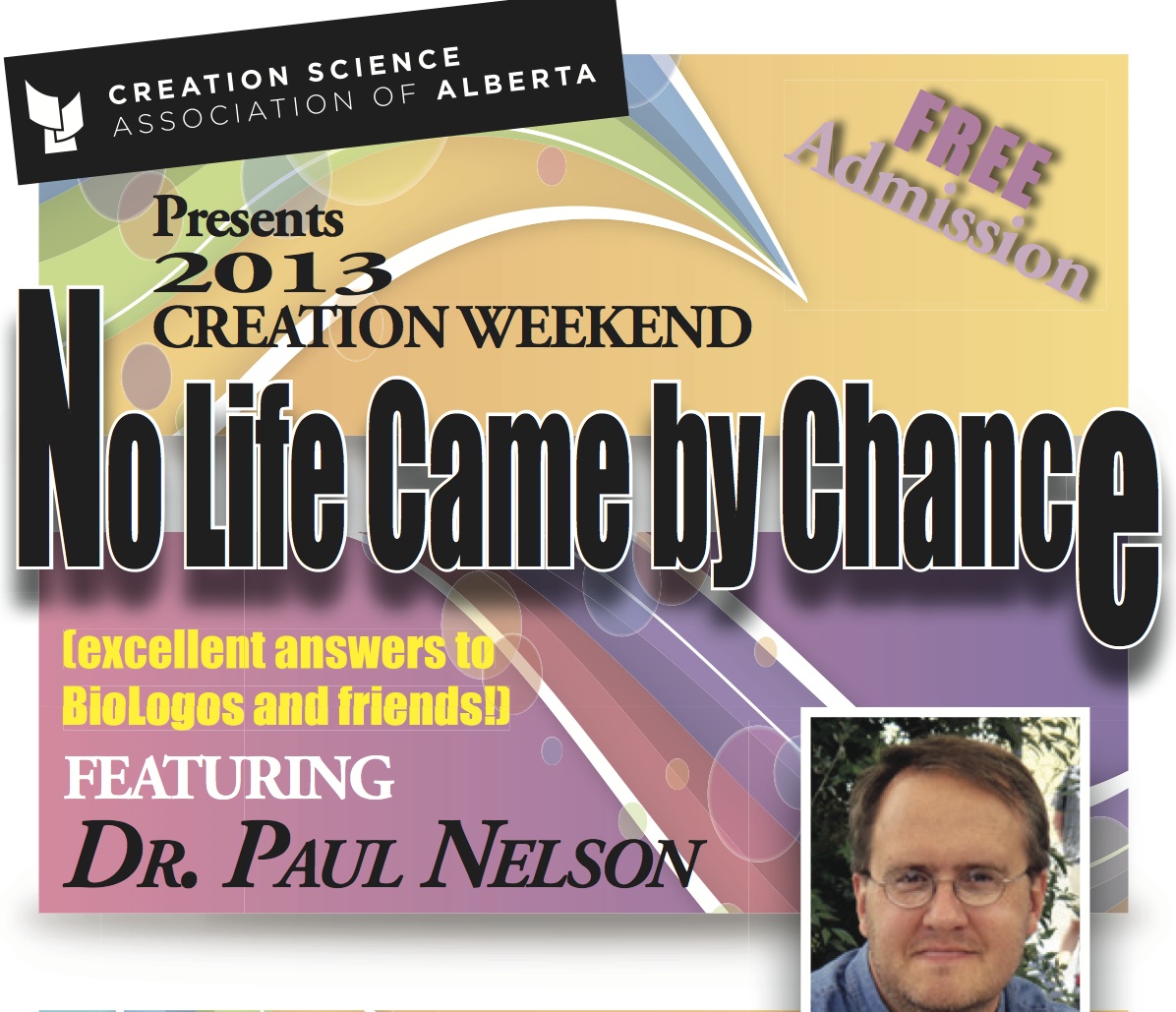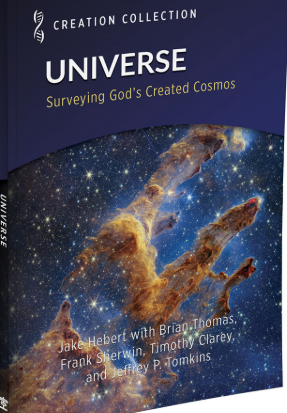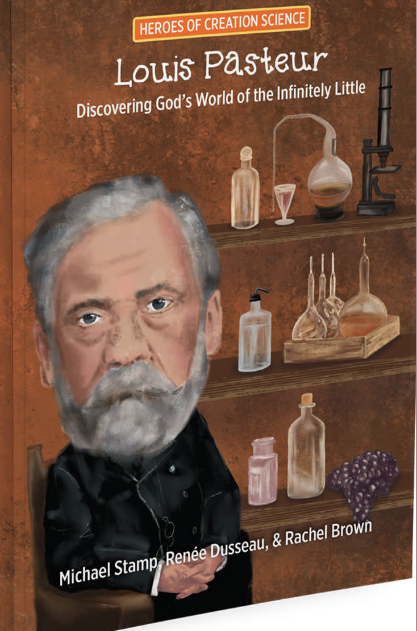Articles » Introductory
Imagine a dinosaur being swept far out to sea. It might seem like a crazy idea, but it appears that such an event happened in many places. The story however becomes even more amazing when we learn that these victims were unusually heavy creatures for their size, the kind that would be expected to sink like a stone once they were in water over their heads. To some, the story may not come as a complete surprise however. Way back in the dark ages, for example in the spring of 1995, an item appeared in Dialogue. In part, it ran as follows…… Read the rest of this entry »
Dinosaur books are everywhere. There is no doubt about that. And you might well suppose that there is nothing new under the sun when it comes to discussions about dinosaurs. However Albertan Vance Nelson of Creation Truth Ministries has achieved the seemingly impossible. His argument about dinosaurs is new and fascinating. And the book is magnificent with beautiful illustrations from sites around the world. Also there are wonderful dinosaur reconstructions based on the latest scientific information. Read the rest of this entry »
Have you ever noticed that everybody seems to place a high value on problem solving? I can well imagine one’s mother saying “This room is way too messy! How are you going to manage your clothes, toys, electronic gadgets (or whatever) so that this does not happen again?” She clearly expects you to come up with a plan and to follow it! Possibly you may come up with some way to organize your treasures in order to keep mum happy. Read the rest of this entry »
Diatoms are a major group of plants which float in open water, and they are one of the most successful types of microscopic algae known. The estimated over 100,000 known species are found in the oceans, in freshwater, in soils and even on damp surfaces. Most diatoms are unicellular, although some can form colonies in the shape of long filaments or ribbons. As eukaryotes or cells with a nucleus, they have highly complex cells, comparable to other eukaryotes such as mammals and even humans (Philippe, et al., 1994, Journal of Evolutionary Biology 7: 247). Read the rest of this entry »
CSAA’s featured speaker for Creation Weekend 2011 was well known creation apologist Dr. Jerry Bergman. Large numbers of people came to hear one or more of his lectures and all declared themselves delighted with his genial, non-confrontational manner and his interesting material. In that Dr. Bergman’s area of expertise is biology, chemistry and medical anatomy, the issues he discussed were quite different from the geological topics which we have considered in recent years. This material demonstrated anew that the issue of creation is broad and encompasses all aspects of nature. Read the rest of this entry »
Have you ever wondered how this transformation takes place? The caterpillar makes his cocoon (or chrysalis) and out pops the butterfly – pretty simple, right? Simple – until you realize that nearly every single organ in the caterpillar body is destroyed and then remade into a beautiful butterfly. Eat leaves? Now change your diet to drinking nectar. Those tiny suction-cupped feet? Forget those – now you can fly with wings that make the whole world envious of your beauty. Read the rest of this entry »
Eggs are complex structures designed to allow the embryo to develop outside of the mother’s body. An animal egg (Latin, ovum) provides a protective shell in which an embryo can develop. In most birds, reptiles, insects, mollusks, fish, and monotremes (mammals that lay eggs instead of giving birth to live young), the egg contains an ovum or, if fertilized, a zygote. A zygote results from fertilization of an ovum, and develops into an embryo. Read the rest of this entry »
No sea animal elicits such fear and terror in the common people as do sharks. Gruesome shark attacks on humans are part of both the folklore and history of many cultures, including our own. Their predatory skill both fascinates and frightens us. Even though sharks rarely attack humans, when an attack occurs, it tends to be widely publicized by the mass media. Ironically, their very survival is now threatened by human-related activities, such as net fishing.
Most people recognize that it is more fun to read a story than to plow through a text-book! Usually however the objectives of the two genres are different: the story is for enjoyment and the text for learning. There have been many stories written, however, to communicate an important message. Charles Dickens’ novels like Great Expectations, for example, spring to mind. So it is with Michael and Beverly Oard’s book Uncovering the Mysterious Woolly Mammoth: Life at the End of the Great Ice Age.
This DVD features discussion by Dr. Andrew Snelling, author of Earth’s Catastrophic Past, an 1100 page work which discusses multiple issues connected to the worldwide flood of Noah. This man is well known for his work on radiometric dating, some of it with the RATE project from Institute for Creation Research, which examined the significance of various dating techniques for conclusions about the age of the earth. He declares firstly that we only think of the earth as old because we expect the rocks to be old, based on a comparison with geological processes going on today. However instead of the present interpreting the past, we should rather turn our understanding around and realize that what happened in the past, explains what we see in the present. Read the rest of this entry »
Any visitor, upon entering the Royal Tyrrell Museum (in Drumheller, Alberta), could certainly be excused for exclaiming “Wow!” as they catch sight of the first fossil on display. The visitor has already passed through a simulated scene of Albertosaurus models, posed as they might have appeared in life. This scene is based on a bone bed of 22 individuals discovered about 1910 by Barnum Brown at Dry Island Buffalo Jump Provincial Park. But we press onward and wow!! There high on the wall to the left in the next gallery is a Tyrannosaurus rex skeleton, almost all there, displayed as it was discovered lying in the rocks. Read the rest of this entry »
Not surprisingly, with an upbeat and exciting speaker, the audiences at our Creation Weekend sessions in October 2012 were large and enthusiastic. The final session ended with a standing ovation, which is most unusual for a lecture. So it was that David Coppedge of Santa Clarita, provided amazing illustrations, interesting information and profound insights. Read the rest of this entry »
Every family, whether into science of not, should obtain a copy of this book for the sake of their children (upper elementary through high school). This deluxe book, The World of Animals, is a wonderful reference book which describes anatomy and ecological significance of the main groups of animals. Read the rest of this entry »
Dr. Paul Nelson has long been involved in the creation/evolution controversy, in fact he grew up in that milieu. His grandfather, Byron C. Nelson (1893-1972) for example, was a theologian and author, influential as a mid-century critic of Darwinian evolution. His grandson Paul, already as a university student, began to write articles for the Bible-Science Newsletter (an early, well-known creationist publication). Read the rest of this entry »
Creation Science Association of Alberta is delighted to announce that biologist and philosopher Dr. Paul Nelson has agreed to be our featured speaker for Creation Weekend, Friday evening and all day Saturday October 18 and 19, 2013. Dr. Nelson is a friendly and non-confrontational individual who makes the latest information in biology come alive in his lectures. He not only describes the issues, but he tells us what the significance of the material is.







